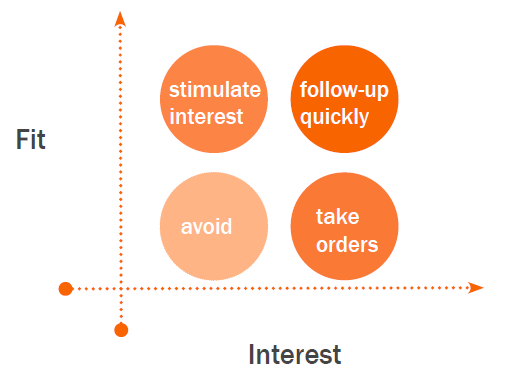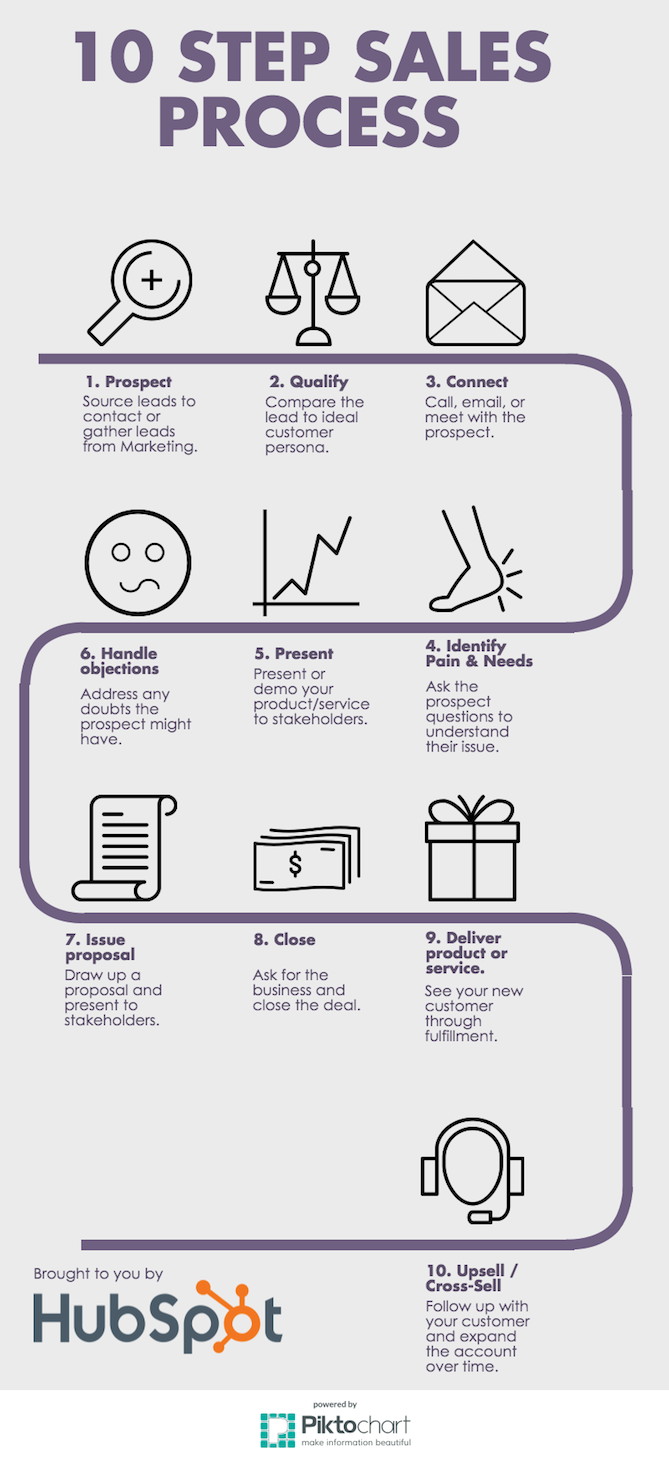The Ultimate Guide to Managing Your Sales Process
What is a Sales Process?
There is no sales process worse than not having a sales process at all. The definition of a sales process is a repeatable set of steps your sales team takes with a given prospect to move them from an early stage prospect to a closed customer. Here is a more detailed explanation by HubSpot CRO, Mark Roberge:
The Finer Points of How to Create a Sales Process
Here are some facts and beneficial tips that should be taken into consideration when diagramming your own sales process or adjusting if you already have one in place.
-
Pause for a moment and recall the last couple of deals which closed.
-
Set goals based on your historical data for the sake of efficiency, agility, and effectiveness. If you try to forecast next year’s sales plan without knowing how leads are generated, this will not get you very far.
-
Understand the prospects’ needs and your companies’ ability to react to their needs.
-
It is also very important to align your sales and marketing funnel from the bottom up as 75% of the time customers make their decision halfway through the selection process. That’s why, building a fully integrated marketing and sales process is the key to successful closed deals.
-
Marketing Qualified Lead is a very important step before your sales force jumps into a deal. It basically means that your prospects have shown some interest by downloading a whitepaper, attending a webinar or signing up for a newsletter, but at this point you still really don’t know if they are qualified to purchase your products or services yet. To asses lead quality, you can create four quadrants as below:

Source: HubSpot
-
Based on recent studies, you need to reach a prospect with at least 10-15 marketing impressions before he or she will even notice your message and follow your call to action as the world is “overly-communicated” now.
-
Your marketers deliver marketing qualified leads to sales but it doesn’t stop there. The sales team must keep nurturing without spamming and overwhelming your potential customer.
-
The way you engage with your customer varies at each step of the process, so rather than rushing the cycle towards a close, it is more productive if you precisely assess which stage your prospect is at and which information should be provided accordingly. To find out more on what the stages are and the relevant types of content, please check out my previous blog post titled Customer Journey Mapping.
-
Make every interaction meaningful. Otherwise, you will encourage them to ignore your messages and emails if there is no value to them.
-
In the end, it all boils down to how you are putting yourself in your prospects’ shoes and helping them make sense of the information by driving more value.
What Does a Sales Process Look Like?
A documented sales process enables organizations:
-
To obtain deeper understanding of the prospect’s needs and pains.
-
To make the sales force more efficient with their time.
-
To have a measurable repeatable process with accountability.
-
To have a consistent sales outline regardless of the rep's approach.
Take a look at the infographic below, giving you an idea of how a sales process looks. The graphic depicts a basic 10-step sales process:

Want To Learn More About This Topic?
There are many more tactics and strategies for vendors to cut through the noise and stand out from literally hundreds of digital solutions and providers. If you’re interested in hearing more from our CMS Analysts, tune into the upcoming CMS-Connected Show on February 26th with Stephen Saber, Scott Liewehr, and special guests Jim Panagas and Jim Lundy as they discuss how vendors need to sell their CMS technology successfully to get noticed in today's bloated marketplace.



Venus Tamturk
Venus is the Media Reporter for CMS-Connected, with one of her tasks to write thorough articles by creating the most up-to-date and engaging content using B2B digital marketing. She enjoys increasing brand equity and conversion through the strategic use of social media channels and integrated media marketing plans.